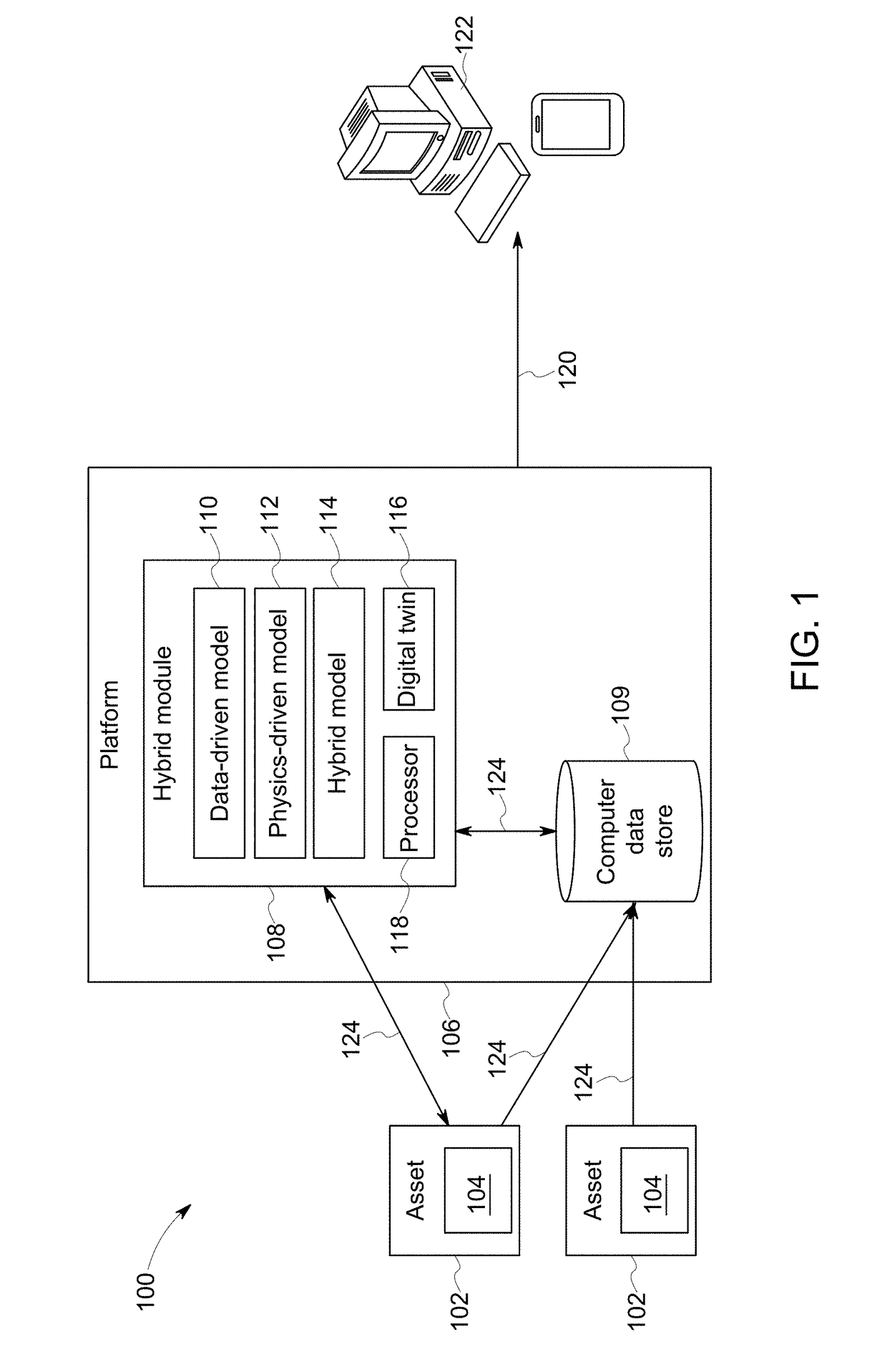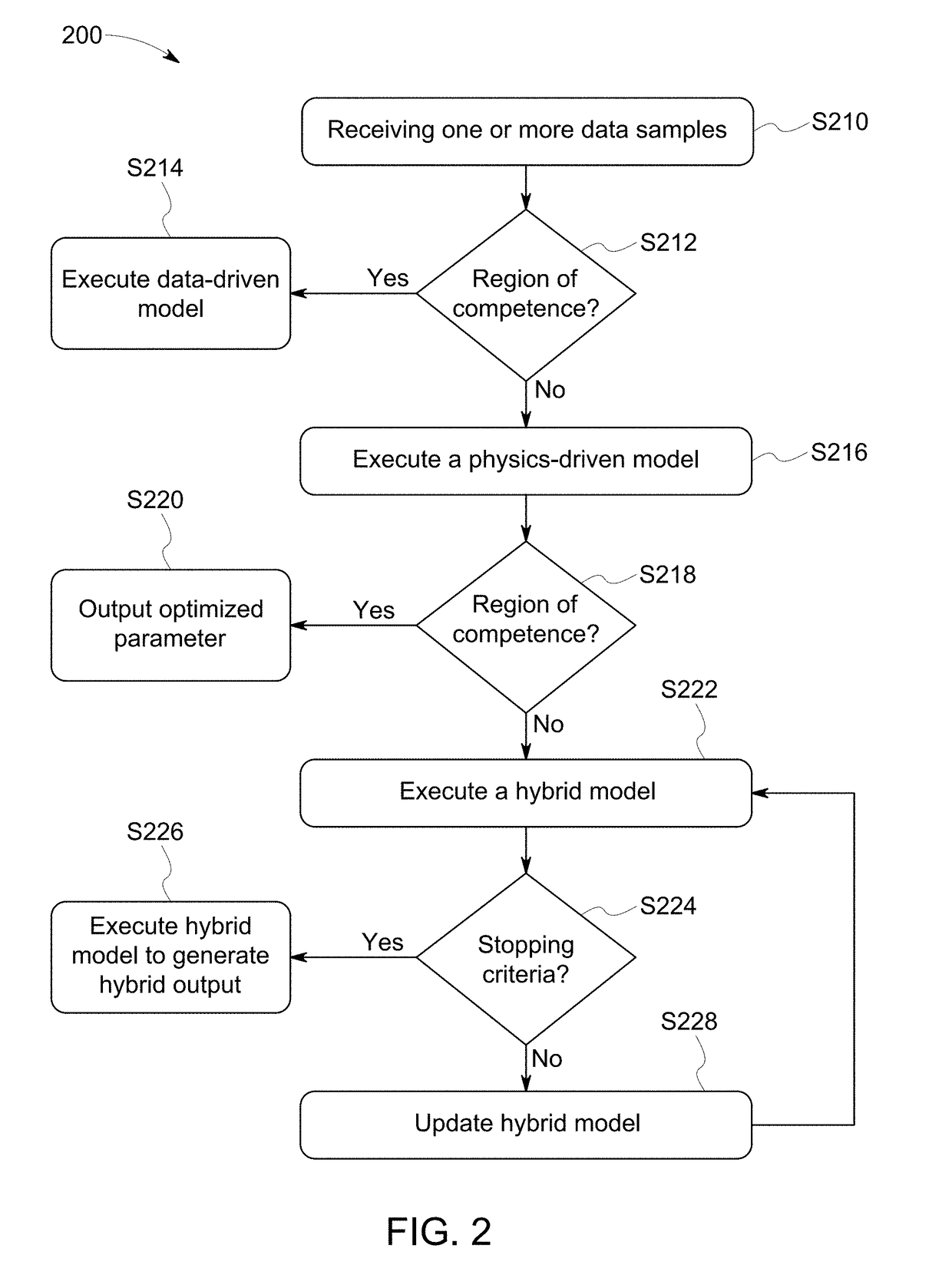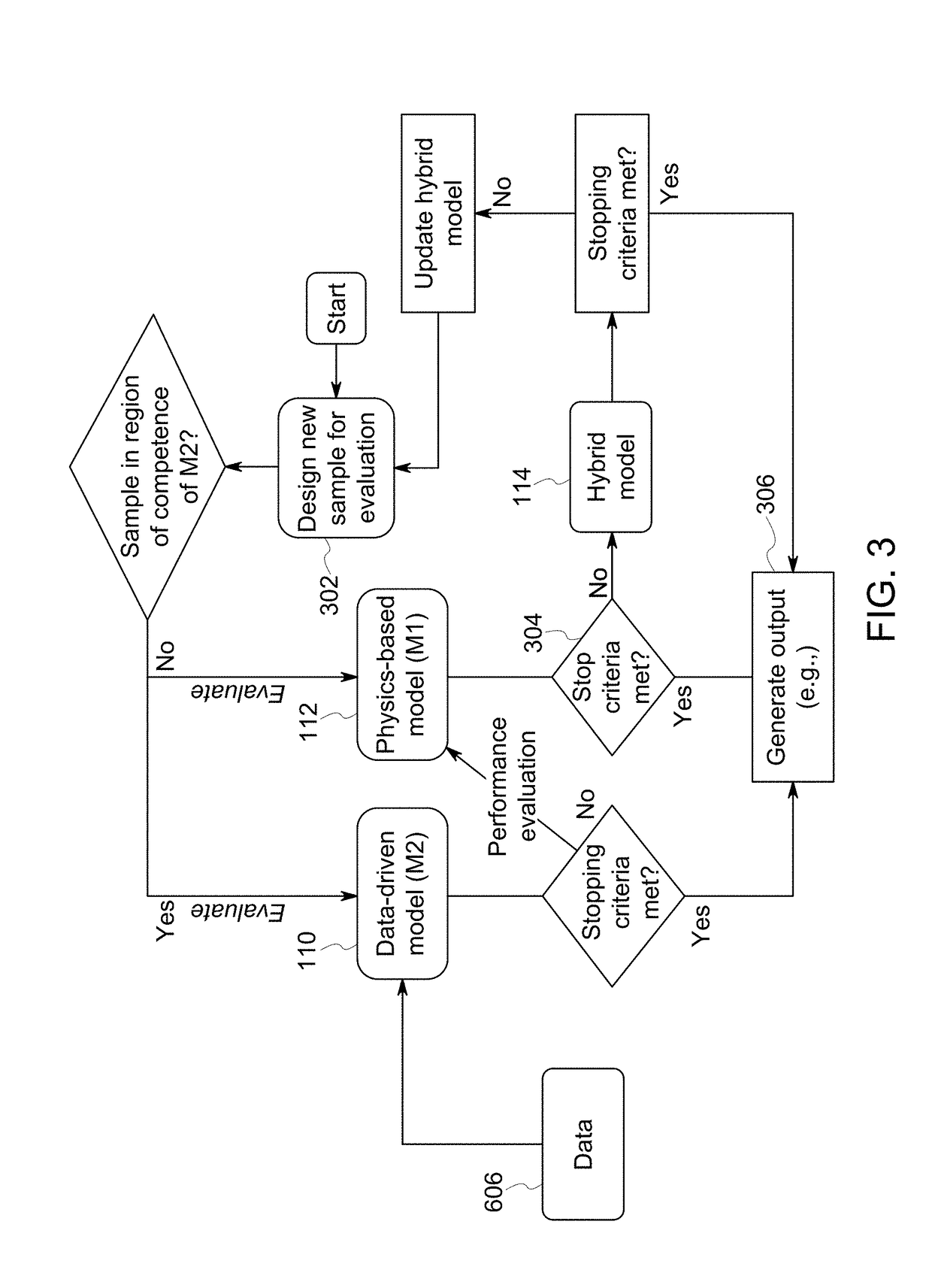Optimization methods for physical models
a physical model and optimization method technology, applied in the field of optimization methods for physical models, can solve the problems of inability to extrapolate or apply empirical models, inability to take a long time to run, and high computing power, so as to reduce the uncertainty of production forecasts, and reduce the cost of errors
- Summary
- Abstract
- Description
- Claims
- Application Information
AI Technical Summary
Benefits of technology
Problems solved by technology
Method used
Image
Examples
Embodiment Construction
[0025]Industrial equipment or assets, generally, are engineered to perform particular tasks as part of industrial processes. For example, industrial assets may include, among other things and without limitation, manufacturing equipment on a production line, aircraft engines, wind turbines that generate electricity on a wind farm, power plants, locomotives, health care and / or imaging devices (e.g., X-ray or MIR systems) or surgical suites for use in patient care facilities, or drilling equipment for use in mining operations. The design and implementation of these assets often takes into account both the physics of the task at hand, as well as the environment in which such assets are configured to operate and the specific operating control these systems are assigned to. Various types of control systems communicate data between elements or nodes of the industrial asset (e.g., different sensors, devices, user interfaces, etc.,) per the instructions of an application, in order to enable ...
PUM
 Login to View More
Login to View More Abstract
Description
Claims
Application Information
 Login to View More
Login to View More - R&D
- Intellectual Property
- Life Sciences
- Materials
- Tech Scout
- Unparalleled Data Quality
- Higher Quality Content
- 60% Fewer Hallucinations
Browse by: Latest US Patents, China's latest patents, Technical Efficacy Thesaurus, Application Domain, Technology Topic, Popular Technical Reports.
© 2025 PatSnap. All rights reserved.Legal|Privacy policy|Modern Slavery Act Transparency Statement|Sitemap|About US| Contact US: help@patsnap.com



